Business Ethics: Understanding and Avoiding Plagiarism in Academics
VerifiedAdded on 2023/06/17
|8
|1425
|315
Report
AI Summary
This report delves into the critical issue of plagiarism within the context of business and finance, emphasizing its connection to academic writing and ethical conduct. It defines plagiarism, explores various types including direct, self, accidental, and paraphrasing, and highlights the significance of academic integrity in fostering trust within the business environment. The report provides a real-world example of plagiarism involving Vladimir Putin's economic thesis and outlines practical strategies for avoiding plagiarism, such as proper citation, quotation, and original thought development. Furthermore, it addresses improving academic writing in a business setting by removing emotional language and refining grammar. The conclusion underscores plagiarism as an ethical problem that undermines credibility, stressing the importance of preventing it to maintain professional integrity. The report also references various books and journals.
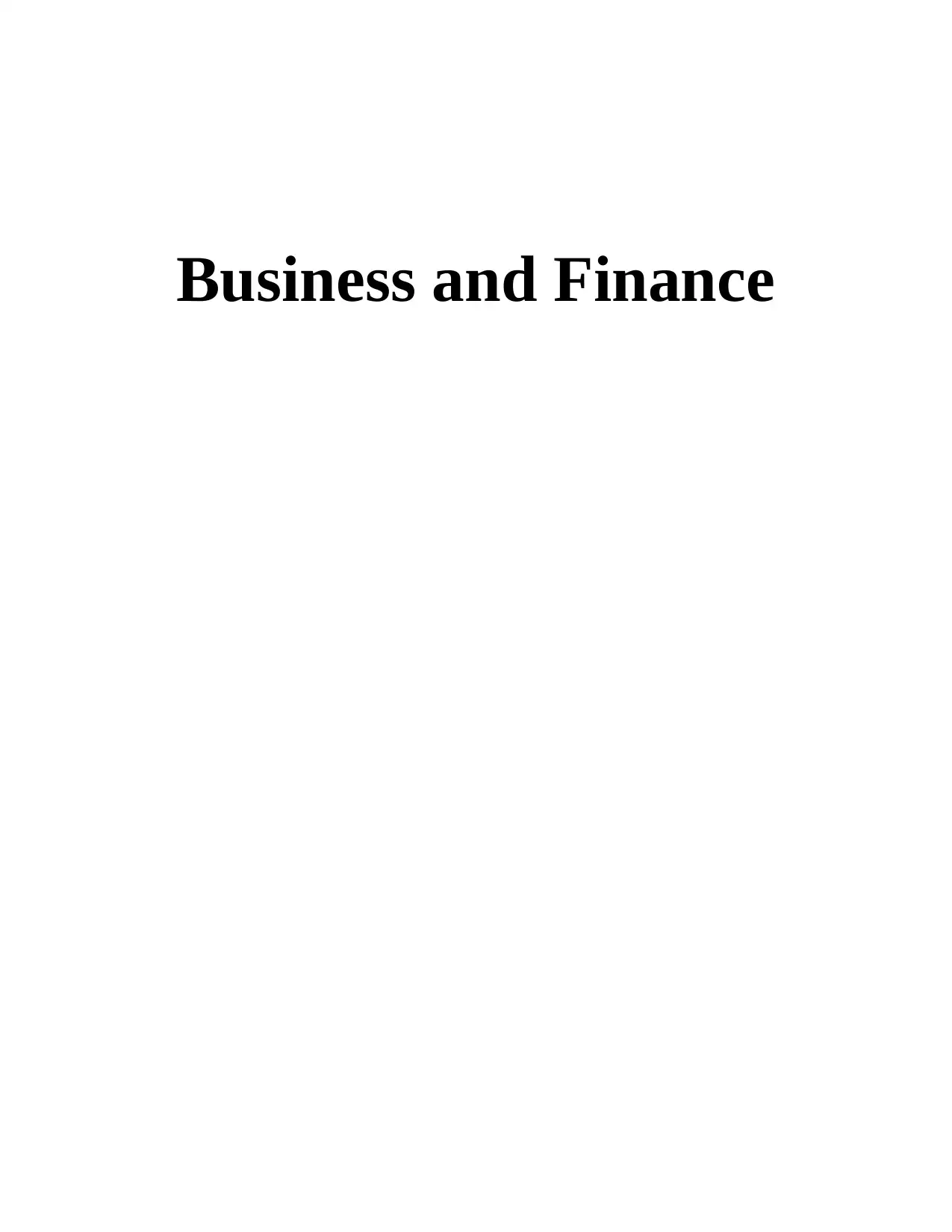
Business and Finance
Paraphrase This Document
Need a fresh take? Get an instant paraphrase of this document with our AI Paraphraser
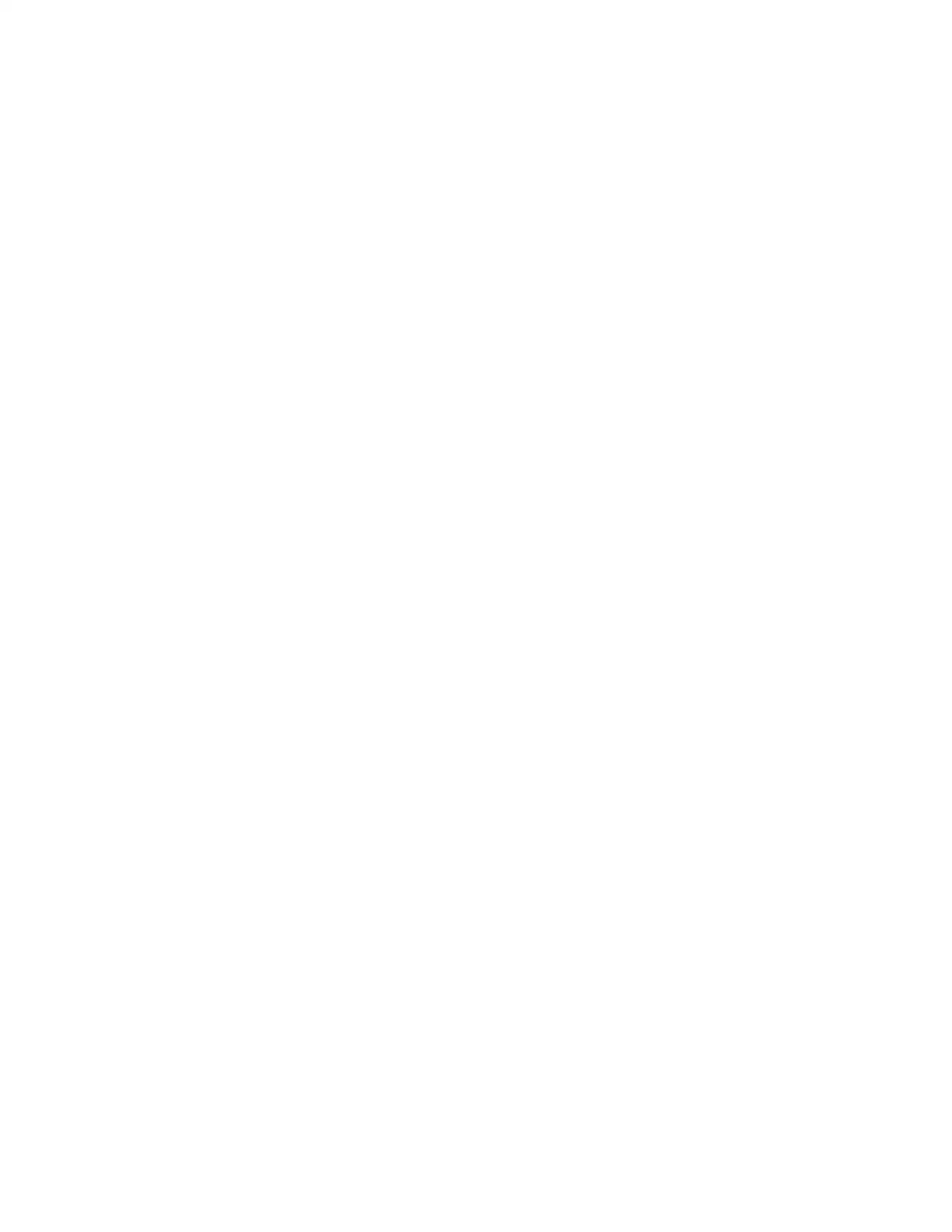
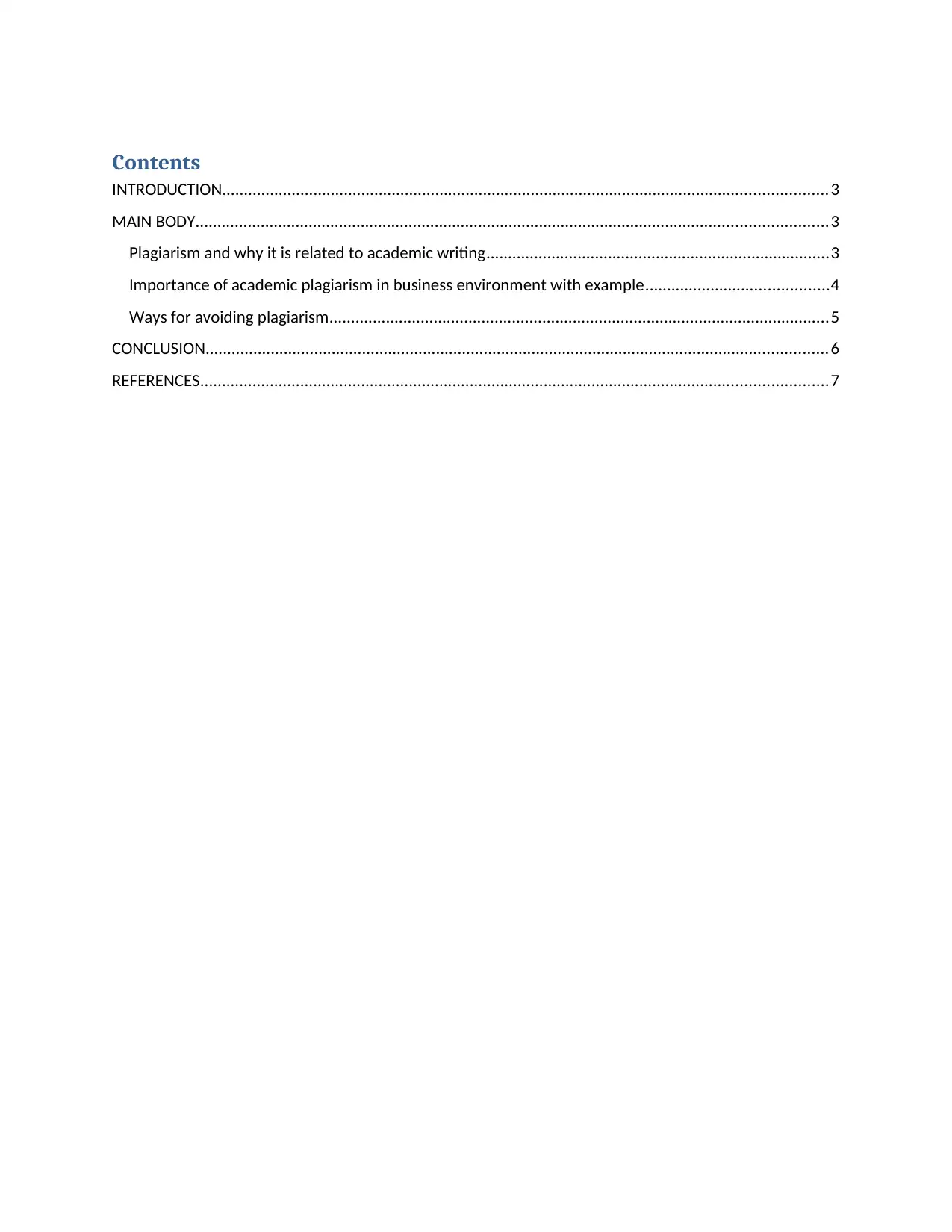
Contents
INTRODUCTION...........................................................................................................................................3
MAIN BODY.................................................................................................................................................3
Plagiarism and why it is related to academic writing...............................................................................3
Importance of academic plagiarism in business environment with example..........................................4
Ways for avoiding plagiarism...................................................................................................................5
CONCLUSION...............................................................................................................................................6
REFERENCES................................................................................................................................................7
INTRODUCTION...........................................................................................................................................3
MAIN BODY.................................................................................................................................................3
Plagiarism and why it is related to academic writing...............................................................................3
Importance of academic plagiarism in business environment with example..........................................4
Ways for avoiding plagiarism...................................................................................................................5
CONCLUSION...............................................................................................................................................6
REFERENCES................................................................................................................................................7
⊘ This is a preview!⊘
Do you want full access?
Subscribe today to unlock all pages.

Trusted by 1+ million students worldwide
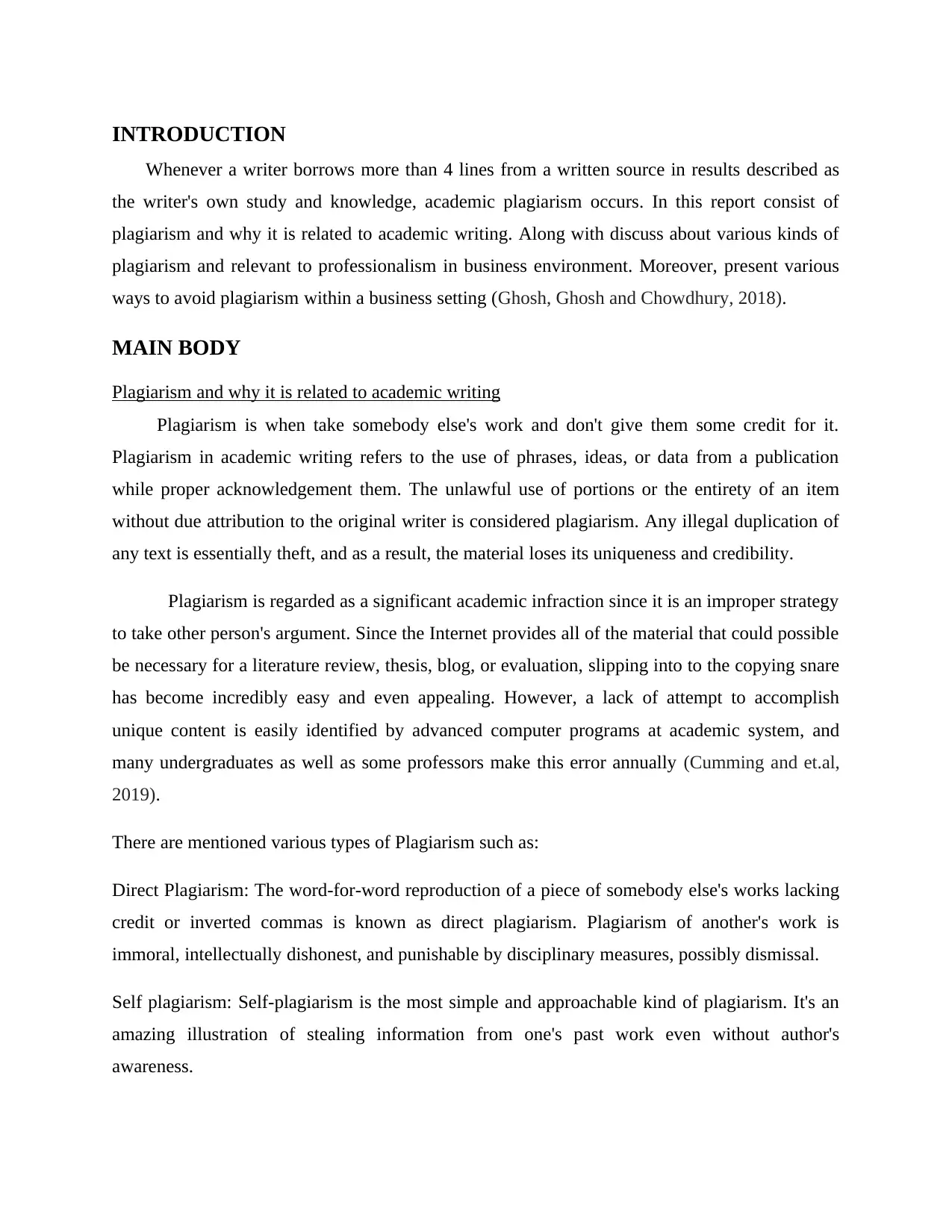
INTRODUCTION
Whenever a writer borrows more than 4 lines from a written source in results described as
the writer's own study and knowledge, academic plagiarism occurs. In this report consist of
plagiarism and why it is related to academic writing. Along with discuss about various kinds of
plagiarism and relevant to professionalism in business environment. Moreover, present various
ways to avoid plagiarism within a business setting (Ghosh, Ghosh and Chowdhury, 2018).
MAIN BODY
Plagiarism and why it is related to academic writing
Plagiarism is when take somebody else's work and don't give them some credit for it.
Plagiarism in academic writing refers to the use of phrases, ideas, or data from a publication
while proper acknowledgement them. The unlawful use of portions or the entirety of an item
without due attribution to the original writer is considered plagiarism. Any illegal duplication of
any text is essentially theft, and as a result, the material loses its uniqueness and credibility.
Plagiarism is regarded as a significant academic infraction since it is an improper strategy
to take other person's argument. Since the Internet provides all of the material that could possible
be necessary for a literature review, thesis, blog, or evaluation, slipping into to the copying snare
has become incredibly easy and even appealing. However, a lack of attempt to accomplish
unique content is easily identified by advanced computer programs at academic system, and
many undergraduates as well as some professors make this error annually (Cumming and et.al,
2019).
There are mentioned various types of Plagiarism such as:
Direct Plagiarism: The word-for-word reproduction of a piece of somebody else's works lacking
credit or inverted commas is known as direct plagiarism. Plagiarism of another's work is
immoral, intellectually dishonest, and punishable by disciplinary measures, possibly dismissal.
Self plagiarism: Self-plagiarism is the most simple and approachable kind of plagiarism. It's an
amazing illustration of stealing information from one's past work even without author's
awareness.
Whenever a writer borrows more than 4 lines from a written source in results described as
the writer's own study and knowledge, academic plagiarism occurs. In this report consist of
plagiarism and why it is related to academic writing. Along with discuss about various kinds of
plagiarism and relevant to professionalism in business environment. Moreover, present various
ways to avoid plagiarism within a business setting (Ghosh, Ghosh and Chowdhury, 2018).
MAIN BODY
Plagiarism and why it is related to academic writing
Plagiarism is when take somebody else's work and don't give them some credit for it.
Plagiarism in academic writing refers to the use of phrases, ideas, or data from a publication
while proper acknowledgement them. The unlawful use of portions or the entirety of an item
without due attribution to the original writer is considered plagiarism. Any illegal duplication of
any text is essentially theft, and as a result, the material loses its uniqueness and credibility.
Plagiarism is regarded as a significant academic infraction since it is an improper strategy
to take other person's argument. Since the Internet provides all of the material that could possible
be necessary for a literature review, thesis, blog, or evaluation, slipping into to the copying snare
has become incredibly easy and even appealing. However, a lack of attempt to accomplish
unique content is easily identified by advanced computer programs at academic system, and
many undergraduates as well as some professors make this error annually (Cumming and et.al,
2019).
There are mentioned various types of Plagiarism such as:
Direct Plagiarism: The word-for-word reproduction of a piece of somebody else's works lacking
credit or inverted commas is known as direct plagiarism. Plagiarism of another's work is
immoral, intellectually dishonest, and punishable by disciplinary measures, possibly dismissal.
Self plagiarism: Self-plagiarism is the most simple and approachable kind of plagiarism. It's an
amazing illustration of stealing information from one's past work even without author's
awareness.
Paraphrase This Document
Need a fresh take? Get an instant paraphrase of this document with our AI Paraphraser
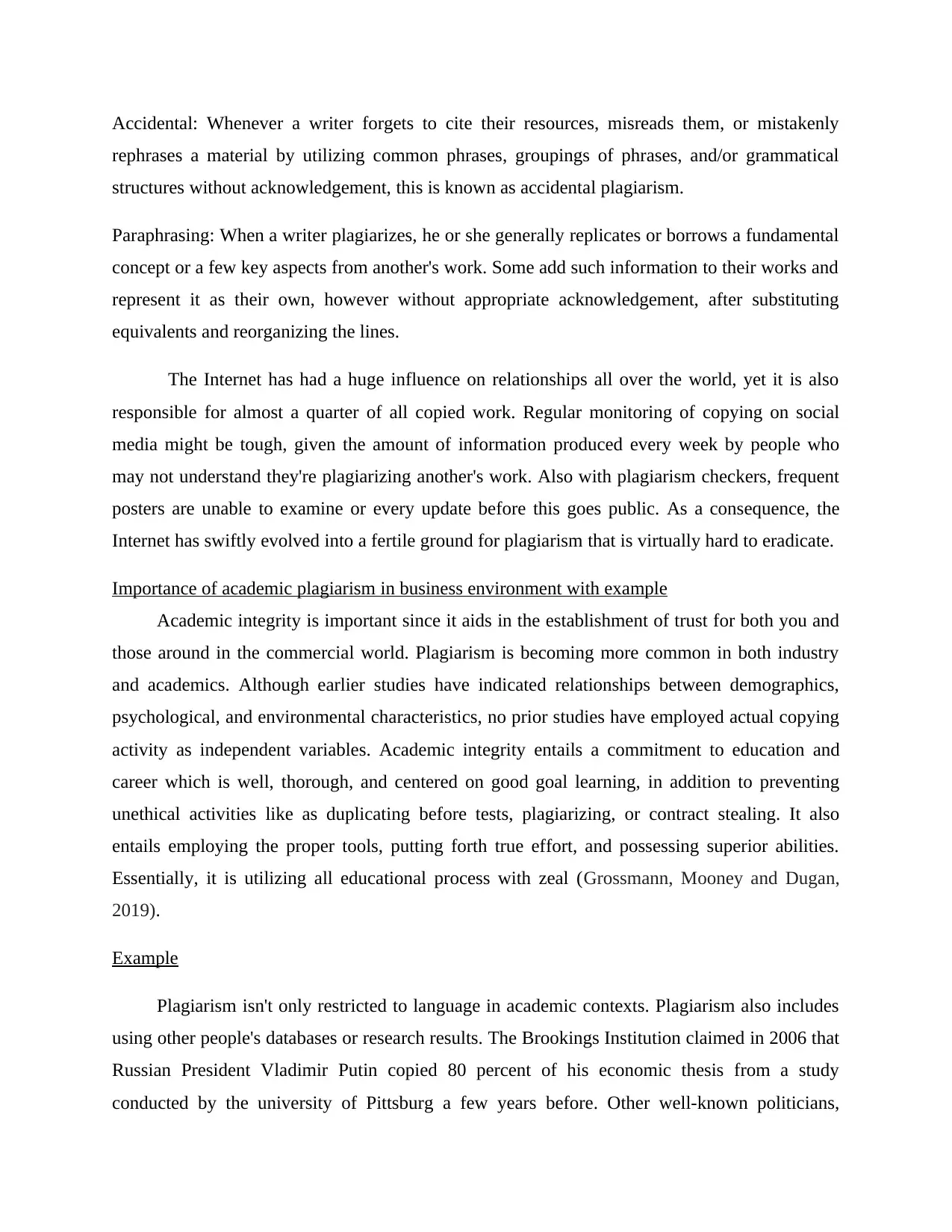
Accidental: Whenever a writer forgets to cite their resources, misreads them, or mistakenly
rephrases a material by utilizing common phrases, groupings of phrases, and/or grammatical
structures without acknowledgement, this is known as accidental plagiarism.
Paraphrasing: When a writer plagiarizes, he or she generally replicates or borrows a fundamental
concept or a few key aspects from another's work. Some add such information to their works and
represent it as their own, however without appropriate acknowledgement, after substituting
equivalents and reorganizing the lines.
The Internet has had a huge influence on relationships all over the world, yet it is also
responsible for almost a quarter of all copied work. Regular monitoring of copying on social
media might be tough, given the amount of information produced every week by people who
may not understand they're plagiarizing another's work. Also with plagiarism checkers, frequent
posters are unable to examine or every update before this goes public. As a consequence, the
Internet has swiftly evolved into a fertile ground for plagiarism that is virtually hard to eradicate.
Importance of academic plagiarism in business environment with example
Academic integrity is important since it aids in the establishment of trust for both you and
those around in the commercial world. Plagiarism is becoming more common in both industry
and academics. Although earlier studies have indicated relationships between demographics,
psychological, and environmental characteristics, no prior studies have employed actual copying
activity as independent variables. Academic integrity entails a commitment to education and
career which is well, thorough, and centered on good goal learning, in addition to preventing
unethical activities like as duplicating before tests, plagiarizing, or contract stealing. It also
entails employing the proper tools, putting forth true effort, and possessing superior abilities.
Essentially, it is utilizing all educational process with zeal (Grossmann, Mooney and Dugan,
2019).
Example
Plagiarism isn't only restricted to language in academic contexts. Plagiarism also includes
using other people's databases or research results. The Brookings Institution claimed in 2006 that
Russian President Vladimir Putin copied 80 percent of his economic thesis from a study
conducted by the university of Pittsburg a few years before. Other well-known politicians,
rephrases a material by utilizing common phrases, groupings of phrases, and/or grammatical
structures without acknowledgement, this is known as accidental plagiarism.
Paraphrasing: When a writer plagiarizes, he or she generally replicates or borrows a fundamental
concept or a few key aspects from another's work. Some add such information to their works and
represent it as their own, however without appropriate acknowledgement, after substituting
equivalents and reorganizing the lines.
The Internet has had a huge influence on relationships all over the world, yet it is also
responsible for almost a quarter of all copied work. Regular monitoring of copying on social
media might be tough, given the amount of information produced every week by people who
may not understand they're plagiarizing another's work. Also with plagiarism checkers, frequent
posters are unable to examine or every update before this goes public. As a consequence, the
Internet has swiftly evolved into a fertile ground for plagiarism that is virtually hard to eradicate.
Importance of academic plagiarism in business environment with example
Academic integrity is important since it aids in the establishment of trust for both you and
those around in the commercial world. Plagiarism is becoming more common in both industry
and academics. Although earlier studies have indicated relationships between demographics,
psychological, and environmental characteristics, no prior studies have employed actual copying
activity as independent variables. Academic integrity entails a commitment to education and
career which is well, thorough, and centered on good goal learning, in addition to preventing
unethical activities like as duplicating before tests, plagiarizing, or contract stealing. It also
entails employing the proper tools, putting forth true effort, and possessing superior abilities.
Essentially, it is utilizing all educational process with zeal (Grossmann, Mooney and Dugan,
2019).
Example
Plagiarism isn't only restricted to language in academic contexts. Plagiarism also includes
using other people's databases or research results. The Brookings Institution claimed in 2006 that
Russian President Vladimir Putin copied 80 percent of his economic thesis from a study
conducted by the university of Pittsburg a few years before. Other well-known politicians,
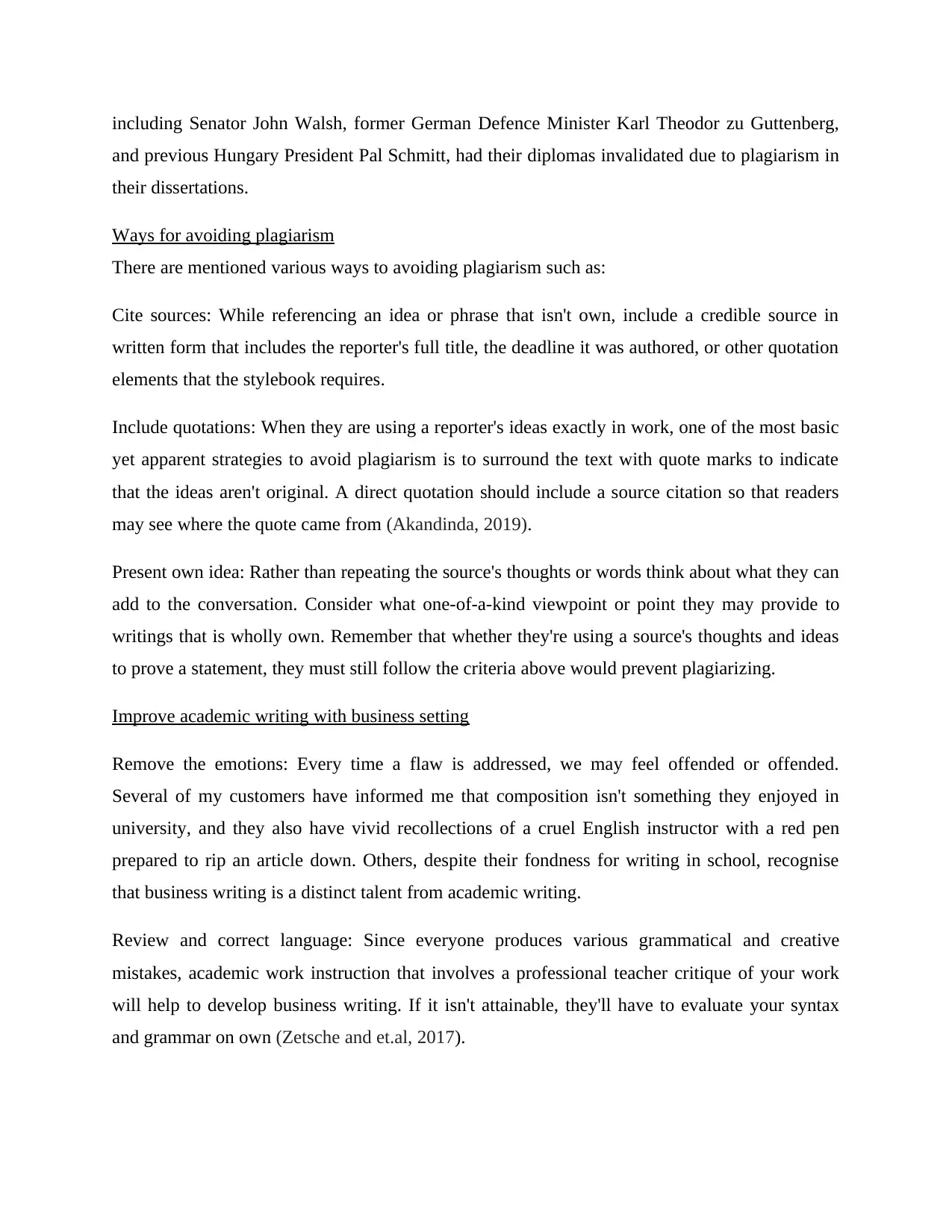
including Senator John Walsh, former German Defence Minister Karl Theodor zu Guttenberg,
and previous Hungary President Pal Schmitt, had their diplomas invalidated due to plagiarism in
their dissertations.
Ways for avoiding plagiarism
There are mentioned various ways to avoiding plagiarism such as:
Cite sources: While referencing an idea or phrase that isn't own, include a credible source in
written form that includes the reporter's full title, the deadline it was authored, or other quotation
elements that the stylebook requires.
Include quotations: When they are using a reporter's ideas exactly in work, one of the most basic
yet apparent strategies to avoid plagiarism is to surround the text with quote marks to indicate
that the ideas aren't original. A direct quotation should include a source citation so that readers
may see where the quote came from (Akandinda, 2019).
Present own idea: Rather than repeating the source's thoughts or words think about what they can
add to the conversation. Consider what one-of-a-kind viewpoint or point they may provide to
writings that is wholly own. Remember that whether they're using a source's thoughts and ideas
to prove a statement, they must still follow the criteria above would prevent plagiarizing.
Improve academic writing with business setting
Remove the emotions: Every time a flaw is addressed, we may feel offended or offended.
Several of my customers have informed me that composition isn't something they enjoyed in
university, and they also have vivid recollections of a cruel English instructor with a red pen
prepared to rip an article down. Others, despite their fondness for writing in school, recognise
that business writing is a distinct talent from academic writing.
Review and correct language: Since everyone produces various grammatical and creative
mistakes, academic work instruction that involves a professional teacher critique of your work
will help to develop business writing. If it isn't attainable, they'll have to evaluate your syntax
and grammar on own (Zetsche and et.al, 2017).
and previous Hungary President Pal Schmitt, had their diplomas invalidated due to plagiarism in
their dissertations.
Ways for avoiding plagiarism
There are mentioned various ways to avoiding plagiarism such as:
Cite sources: While referencing an idea or phrase that isn't own, include a credible source in
written form that includes the reporter's full title, the deadline it was authored, or other quotation
elements that the stylebook requires.
Include quotations: When they are using a reporter's ideas exactly in work, one of the most basic
yet apparent strategies to avoid plagiarism is to surround the text with quote marks to indicate
that the ideas aren't original. A direct quotation should include a source citation so that readers
may see where the quote came from (Akandinda, 2019).
Present own idea: Rather than repeating the source's thoughts or words think about what they can
add to the conversation. Consider what one-of-a-kind viewpoint or point they may provide to
writings that is wholly own. Remember that whether they're using a source's thoughts and ideas
to prove a statement, they must still follow the criteria above would prevent plagiarizing.
Improve academic writing with business setting
Remove the emotions: Every time a flaw is addressed, we may feel offended or offended.
Several of my customers have informed me that composition isn't something they enjoyed in
university, and they also have vivid recollections of a cruel English instructor with a red pen
prepared to rip an article down. Others, despite their fondness for writing in school, recognise
that business writing is a distinct talent from academic writing.
Review and correct language: Since everyone produces various grammatical and creative
mistakes, academic work instruction that involves a professional teacher critique of your work
will help to develop business writing. If it isn't attainable, they'll have to evaluate your syntax
and grammar on own (Zetsche and et.al, 2017).
⊘ This is a preview!⊘
Do you want full access?
Subscribe today to unlock all pages.

Trusted by 1+ million students worldwide
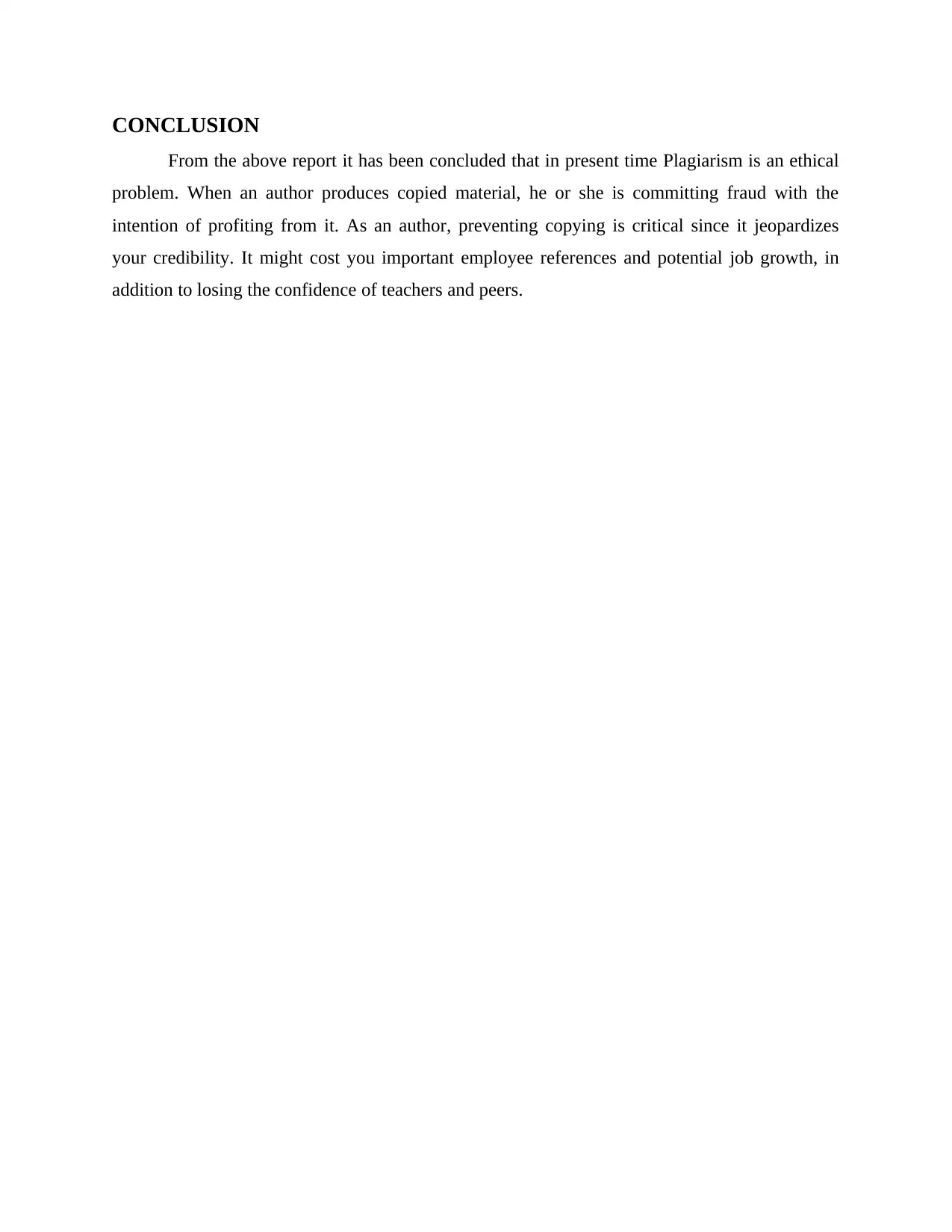
CONCLUSION
From the above report it has been concluded that in present time Plagiarism is an ethical
problem. When an author produces copied material, he or she is committing fraud with the
intention of profiting from it. As an author, preventing copying is critical since it jeopardizes
your credibility. It might cost you important employee references and potential job growth, in
addition to losing the confidence of teachers and peers.
From the above report it has been concluded that in present time Plagiarism is an ethical
problem. When an author produces copied material, he or she is committing fraud with the
intention of profiting from it. As an author, preventing copying is critical since it jeopardizes
your credibility. It might cost you important employee references and potential job growth, in
addition to losing the confidence of teachers and peers.
Paraphrase This Document
Need a fresh take? Get an instant paraphrase of this document with our AI Paraphraser
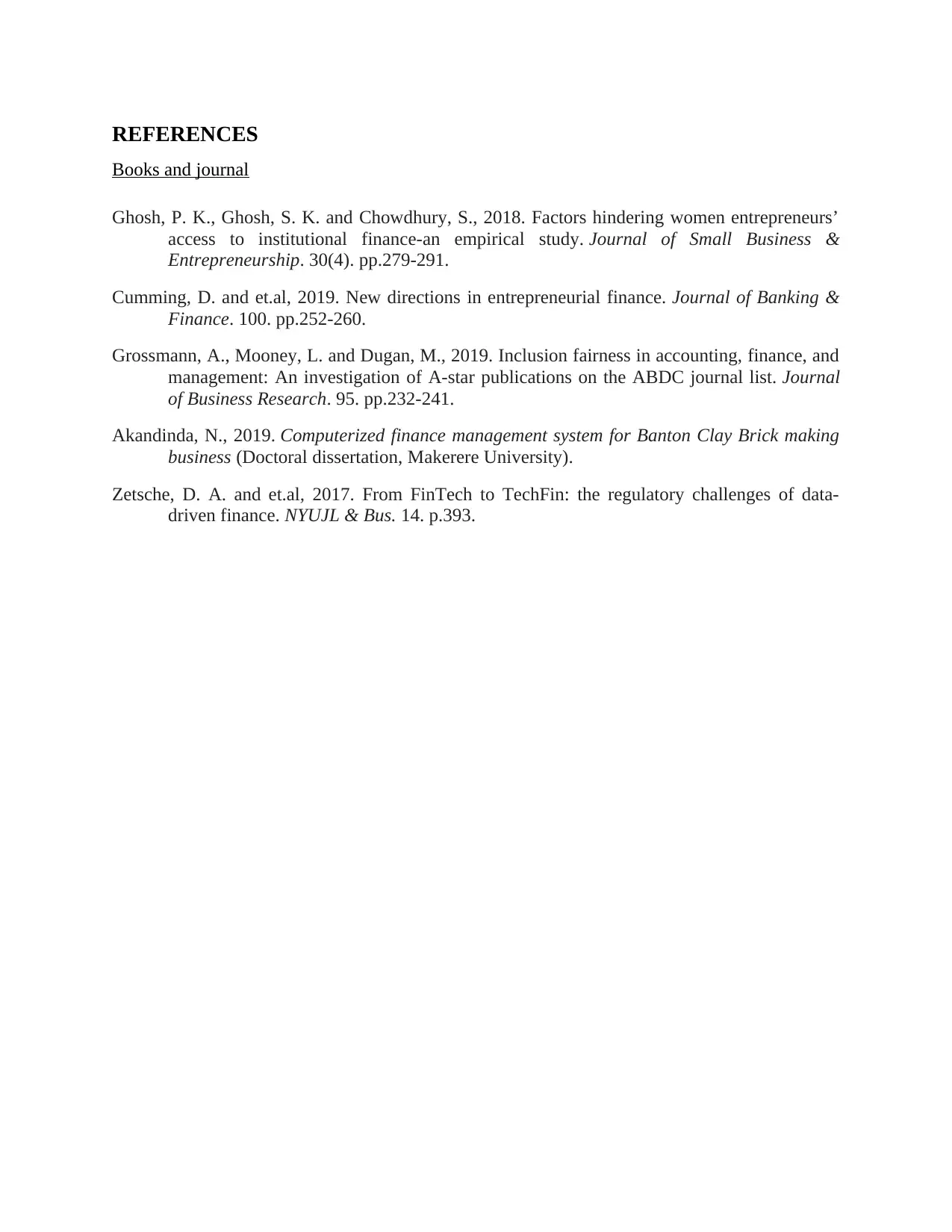
REFERENCES
Books and journal
Ghosh, P. K., Ghosh, S. K. and Chowdhury, S., 2018. Factors hindering women entrepreneurs’
access to institutional finance-an empirical study. Journal of Small Business &
Entrepreneurship. 30(4). pp.279-291.
Cumming, D. and et.al, 2019. New directions in entrepreneurial finance. Journal of Banking &
Finance. 100. pp.252-260.
Grossmann, A., Mooney, L. and Dugan, M., 2019. Inclusion fairness in accounting, finance, and
management: An investigation of A-star publications on the ABDC journal list. Journal
of Business Research. 95. pp.232-241.
Akandinda, N., 2019. Computerized finance management system for Banton Clay Brick making
business (Doctoral dissertation, Makerere University).
Zetsche, D. A. and et.al, 2017. From FinTech to TechFin: the regulatory challenges of data-
driven finance. NYUJL & Bus. 14. p.393.
Books and journal
Ghosh, P. K., Ghosh, S. K. and Chowdhury, S., 2018. Factors hindering women entrepreneurs’
access to institutional finance-an empirical study. Journal of Small Business &
Entrepreneurship. 30(4). pp.279-291.
Cumming, D. and et.al, 2019. New directions in entrepreneurial finance. Journal of Banking &
Finance. 100. pp.252-260.
Grossmann, A., Mooney, L. and Dugan, M., 2019. Inclusion fairness in accounting, finance, and
management: An investigation of A-star publications on the ABDC journal list. Journal
of Business Research. 95. pp.232-241.
Akandinda, N., 2019. Computerized finance management system for Banton Clay Brick making
business (Doctoral dissertation, Makerere University).
Zetsche, D. A. and et.al, 2017. From FinTech to TechFin: the regulatory challenges of data-
driven finance. NYUJL & Bus. 14. p.393.
1 out of 8
Related Documents
Your All-in-One AI-Powered Toolkit for Academic Success.
+13062052269
info@desklib.com
Available 24*7 on WhatsApp / Email
![[object Object]](/_next/static/media/star-bottom.7253800d.svg)
Unlock your academic potential
Copyright © 2020–2025 A2Z Services. All Rights Reserved. Developed and managed by ZUCOL.





